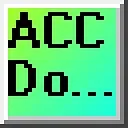0:00
PLC Programming Concepts Not Well Understood, Part 1
0:07
PLC, Programma Logic Controller, programming is a critical aspect of industrial automation
0:12
yet many individuals struggle to grasp its fundamental concepts. This guide will dive into the key principles of PLC programming that are often misunderstood
0:21
shedding light on these concepts and providing clarity for beginners and experienced professionals
0:26
By addressing common misconceptions and exploring the core principles of PLC programming, we
0:31
will aim to demystify this essential aspect of industrial control systems. Whether you are new to PLC programming or are looking to refine your understanding
0:40
this will serve as a valuable resource to deepen your knowledge and proficiency in this
0:45
essential field. Sometimes I wish I had this knowledge before my first PLC program
0:51
Part 1 will discuss the PLC scan cycle and ladder logic. These are some common areas where people often struggle
0:58
Let's get started. Detailed information contained in this video can be found at accautomation.ca, a link has
1:05
been put in the description below. If you have not watched the other videos yet, there will be links in the description below
1:09
that will start you with video 1. There will be links to the rest of the videos in the series as well
1:18
PLC Concepts 1 – Scan Cycle Understanding how the PLC program scans will help us program and troubleshoot the PLC
1:29
The most straightforward scan cycle of a PLC consists of four steps
1:33
Read inputs, execute programs, diagnostics and communication, and update outputs. Programmable logic controllers' PLCs use a cyclic scan
1:43
This means that the PLC is not waiting for an input condition to change from one state
1:47
to the other. It constantly looks at the condition of the input and makes a copy of that in memory
1:52
The time it takes to complete one scan is called scan time
1:57
Typical scan times range from 10 milliseconds to 10 microseconds. This translates from 0.01 to 0.0001 seconds per PLC scan
2:12
Once the PLC inputs are read, the program or programs are executed
2:16
The program will read the memory area for the inputs and set the memory areas for the
2:20
outputs as it executes your instructions. Programs can be written in several different programming languages depending on the controller used
2:29
Standardization such as IEC has set 5 official PLC languages for programming
2:36
They are Structured Text ST, Function Block Diagram FBD, Sequential Function Chart SFC
2:45
Function List IL, and Ladder Diagram LD. When the scan of your program is complete, the PLC will then handle the communication diagnostics
2:56
Internal diagnostics will ensure that the PLC continues to scan the logic with no errors
3:00
are detected. These are system errors such as memory integrity and execution timing
3:07
Communication is for the external devices such as programming software, HMI, human-machine
3:11
interface, etc. The final step of the PLC scan is to update the outputs
3:18
Output internal memory is then copied to the physical outputs and the scan cycle begins again
3:25
Every PLC controller has this essential operation. However, some will have additional instructions to help you with your application if the input
3:33
signal you are looking for is faster than the scan time of the cycle
3:37
This can be handled with PLC instructions to update the physical I.O. within the program
3:43
or a separate processor operating input and output settings independently from the main
3:47
PLC scan. This is usually referred to as a high-speed counter. Understanding the timing and order of operations is critical within the PLC controller
3:57
This will help you understand and correct unexpected behavior in time-sensitive applications
4:03
If you enjoyed this video, please hit the like button below. Keeping up with all the latest automation innovations can be difficult, so make sure
4:13
you hit the subscribe button. Remember to hit the bell beside your subscription to actually receive those notifications
4:22
PLC Concepts 2 – Ladder Logic Ladder Logic, LD, is the most popular programming language for PLCs
4:31
It was written to mimic the mechanical relays in a panel that the program controller replaced
4:36
It has two vertical rails and a series of horizontal rungs between them
4:40
This looks like a flowchart or ladder. Contacts or inputs are on the left side of the rung
4:47
If the conditions are true or on, this creates a flow turning on the outputs to the right
4:50
side of the rung. Controllers usually execute the ladder logic program from left to right, top to bottom
4:57
The output of one rung is available for the next rung. The common misconception about ladder logic programming is the sequential evaluation of
5:06
rungs and how specific conditions influence program flow. We know that the scan cycle of the PLC is cyclic
5:14
Inputs are scanned and put into an internal memory location. This means that the PLC program can manipulate this input table
5:22
The second rung of our sample program will set the input X0 as the output based on the
5:28
X1 input. When we use the X0 as an input condition on rung 3, you will see that this is based on
5:35
input X1. At the beginning of the ladder logic execution, X0 will turn on Y0
5:44
X1 input will now control the value of bit X0 in memory, in rung 2
5:50
Rung 3 will control Y1 based on the input X0. You can see that basic ladder logic concepts seem simple at first, but understanding the
6:00
program execution is essential for troubleshooting and programming in this language. If any of these topics are unclear, please ask for a deeper explanation or examples
6:09
We will break them down further. If you find specific PLC programming concepts challenging, let me know and I can help clarify them
6:18
To learn how to use the free Do-more Designer programming software we used in this video
6:23
click here. To learn more about the actual PLC and its development, click here

